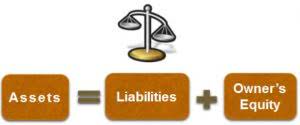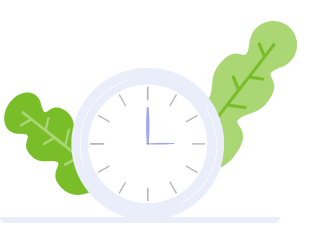Direct write off method definition

Based on prior history, the company knows the approximate percentage or sales or outstanding receivables that will not be collected. unearned revenue Using those percentages, the company can estimate the amount of bad debt that will occur. That allows us to record the bad debt but since accounts receivable is simply the total of many small balances, each belonging to a customer, we cannot credit Accounts Receivable when this entry is recorded. The allowance method offers a more nuanced approach to managing bad debts. It estimates uncollectible accounts at the end of each accounting period, creating a reserve or allowance for doubtful accounts. This estimated amount is then used to reduce the total accounts receivable on the balance sheet, reflecting a more realistic view of what the company expects to collect.
Present Real-World Examples of Companies Using Each Method
- Businesses often grapple with the challenge of uncollectible accounts receivable.
- GAAP states that expenses and revenue must be matched within the same accounting period.
- It is important to know accounts receivable are the current assets in the balance sheet and the increase of them on debit while decreasing of them are on credit.
- The write-off amount is also a credit to the accounts receivable account directly and it makes the account receivable amount become net amount.
When using the percentage of sales method, the resulting amount is the amount of bad debt that should be recorded. When using the percentage of accounts receivable method, the amount calculated is the new balance in allowance for doubtful accounts. However, the direct write-off method can result in misstating the income between reporting periods if the bad debt journal entry occurred in a different period from the sales entry. For such a reason, it is only permitted when writing off immaterial amounts. The journal entry for the direct write-off method is a debit to bad debt expense and a credit to accounts receivable. To implement the allowance method, companies analyze historical data on credit sales and payments, considering factors such as industry averages, customer creditworthiness, and current economic trends.

Are the Accounts Receivable Current or Non-assets?
Instead of focusing on the fear and anger, she started her accounting and consulting firm. In the last 10 years, she has worked with clients all over the country and now sees her diagnosis as an opportunity that opened doors to a fulfilling life. Kristin is also the creator of Accounting In Focus, a website for students taking accounting courses.

Direct Impact on Income Statement
The contra-asset, Allowance for Doubtful Accounts, is proportional to the balance in direct write-off method the corresponding asset, Accounts Receivable. The outstanding balance of $2,000 that Craft did not repay will remain as bad debt. The two methods of recording bad debt are 1) direct write-off method and 2) allowance method. The client initially promised to pay after three months but didn’t do so.
- Therefore, it not advised to use direct write-off method other than for very small businesses.
- In 2006, she obtained her MS in Accounting and Taxation and was diagnosed with Hodgkin’s Lymphoma two months later.
- When a company decides to leave it out, they overstate their assets, and they could even overstate their net income.
- How do you record the sale of inventory to a customer who the credit manager deems will have a 10% chance of paying?
- With the allowance method, the business can estimate its bad debt at the end of the financial year.
- This means that the expense is recognized in the period when the debt is determined to be uncollectible, not necessarily in the same period as the related sales.
With the allowance method, the business can estimate its bad debt at the end of the financial year. Rather than writing off bad debt as unpaid invoices come in, the amount is tallied up only at the end of the accounting year. As of January 1, 2018, GAAP requires a change in how health-care entities record bad debt expense. Before this change, these entities would record revenues for billed services, even if they did not expect to collect any payment from the patient. This is different from the last journal entry, where bad debt was estimated at $58,097.

Cash
Bad debt expense is the way businesses account for a receivable account that will not be paid. Bad debt arises when a customer either cannot pay because of financial difficulties or chooses not to pay due to a disagreement over the product or service they were sold. Therefore, the direct write-off method can only be appropriate for small immaterial amounts. We will demonstrate how to record the journal entries of bad debt using MS Excel. Our AI-powered Anomaly Management Software helps accounting professionals identify and rectify potential ‘Errors and Omissions’ throughout the financial period so that teams can avoid the month-end rush.
The specific action used to write off an account receivable under this method with accounting software is to create a credit memo for the customer in question, which offsets the amount of the bad debt. Creating the credit memo creates a debit to https://www.bookstime.com/articles/outstanding-checks a bad debt expense account and a credit to the accounts receivable account. Then all of the category estimates are added together to get one total estimated uncollectible balance for the period.

Credit Cloud
The balance sheet method (also known as the percentage of accounts receivable method) estimates bad debt expenses based on the balance in accounts receivable. The method looks at the balance of accounts receivable at the end of the period and assumes that a certain amount will not be collected. Accounts receivable is reported on the balance sheet; thus, it is called the balance sheet method. The balance sheet method is another simple method for calculating bad debt, but it too does not consider how long a debt has been outstanding and the role that plays in debt recovery.
This shall give us a deeper understanding of the process and its intricacies. The direct write-off method is the simplest method to book and record the loss on account of uncollectible receivables, but it is not according to the accounting principles. It also ensures that the loss booked is based on actual figures and not on appropriation. But it violates the accounting principles, GAAP, matching concepts, and a true and fair view of the Financial Statements.
